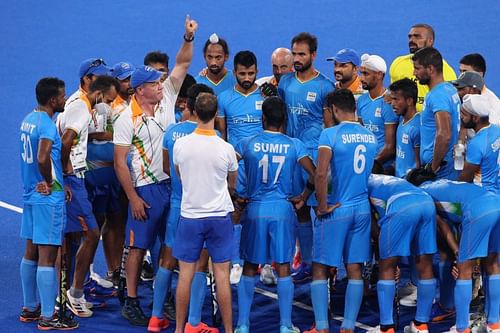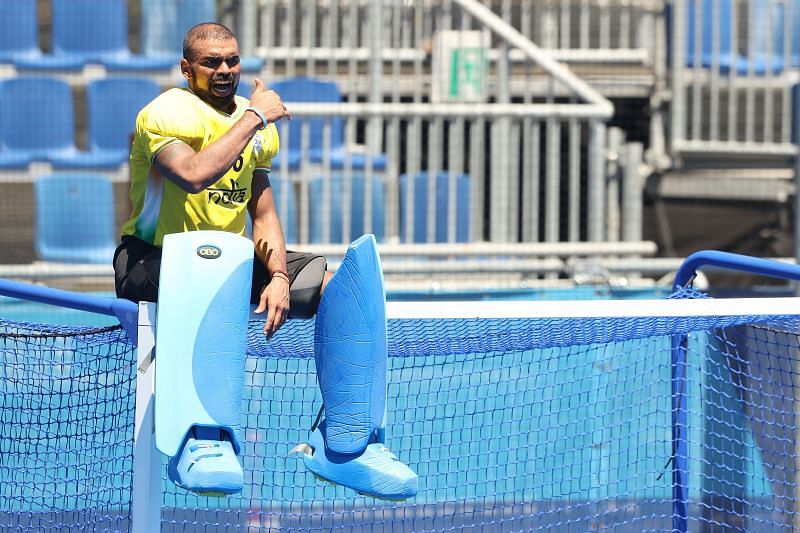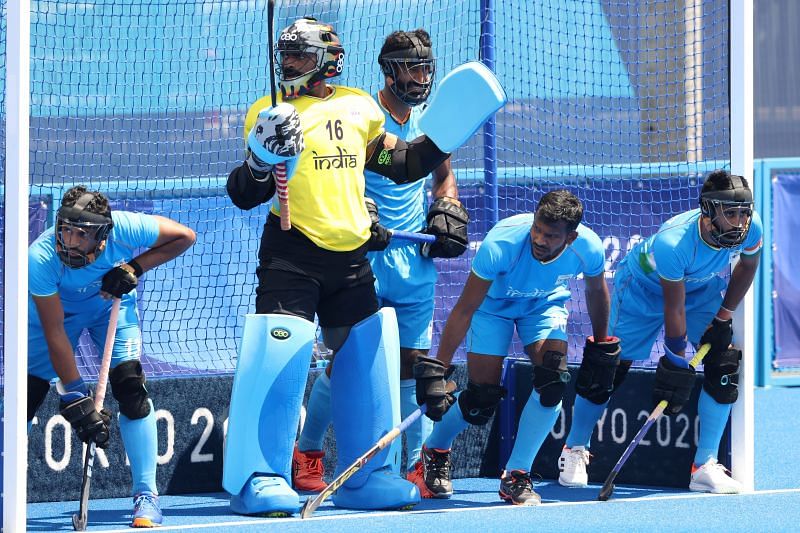
What hurdles must the Indian Men's Hockey Team overcome to reach the pinnacle of FIH world rankings?

With an impressive Bronze medal finish in the recently concluded Tokyo Olympics, the Indian Men's Hockey team has raised the expectations of fans and followers across the country.
The team made a spectacular comeback from a 1-7 thrashing at the hands of Australia in their second match of the tournament to win four games on the bounce. This string of wins helped India rise to 3rd spot in the FIH World rankings, their highest ever.
The men made it clear that their rise in the world rankings was not just a stroke of luck, by edging out four-time Olympic gold medalist Germany in a closely contested bronze medal match and finishing on the winners' podium after a long gap of 41 years.
All the euphoria of the Tokyo games has finally settled down and the Indian men's team has resumed their training at the Sports Authority of India (SAI) center in Bangalore.
Here's a look at five areas that the Indian men's team should focus on to reach the top of the world rankings and finish with a gold at the Paris Olympics, which is just three years down the line.
Indian Hockey Men's Team: Areas to focus on for success
Conceding Penalty Corners:
Throughout the years, one of the major weaknesses in the Indian defense has been conceding too many Penalty Corners in crunch situations.
The fast-paced nature of the game has made it important for the players to be quick on their feet, quite literally, as most of the PCs are won by finding the foot in the opposition's shooting circle.
The Indian team's performance in the Tokyo games has shown that the team still needs improvement when it comes to conceding Penalty Corners. The following table lists the PCs conceded by India against each of their opponents in the Olympic games.
As is evident from the table, the Indian Men's Hockey team have conceded 61 PCs throughout the course of the Olympic Games and have conceded 10 or more PCs in a match thrice (against New Zealand, Belgium and Germany).
This is in stark contrast to the gold medal winners Belgium, who conceded a mere 19 PCs, out of which only twice were the opponents able to convert the PC to a goal.
Silver medal winners Australia too have an impressive record when it comes to penalty corners, having never conceded 10 or more PCs in a game throughout the Olympic games.
The stats don't lie and it is clear that if India were to leapfrog Belgium and Australia, they would have to work on their defense and reduce the number of PCs they concede.
Grooming the Next-Gen Goalkeeper:

In recent years, the hockey team's stalwart custodian PR Sreejesh rose above the ranks to become one of India's best ever goalkeepers and arguably the best goalkeeper in the world. Sreejesh's reliable and consistent performances have made him the goalkeeper of choice during crucial situations and penalty shootouts.
While the veteran goalkeeper has saved India countless times and stood like a wall in front of goal, age is certainly not on his side. The 33-year old has already been part of three Olympics (2012, 2016 and 2021) and may not have many years of international hockey left in him.
Moving forward, the team needs to groom the next generation of goalkeepers. The reserve goalkeepers in our ranks, namely Krishan Pathak and Suraj Karkera, will have to take up more responsibility in the coming years. Incidentally, Krishan Pathak was part of the 2016 Junior World Cup winning team.
Krishan Pathak looked particularly impressive in the FIH Pro League matches against Belgium and Argentina, where he made eight and six saves, respectively. However, his performances against Australia and the Netherlands lacked consistency.
One feels that the only way forward to improve his game is more match exposure. The think tank will be considering allowing Pathak to feature in the playing-11 throughout the four quarters. An impressive and consistent performance at every opportunity he gets would instill confidence and trust in the coaching staff to make him the goalkeeper of choice when it comes to penalty shootouts.
At the 2016 Junior World Cup held in Lucknow, PR Sreejesh played a crucial role in mentoring the U21 goalkeepers. In the coming years, one would hope to see him take up a similar role with the Senior Men's team.
Domestic Hockey League:
Up until 2017, the Hockey India League provided an excellent platform for young Indian talents to play alongside international hockey players from around the globe. This was one of the main factors that helped India rise in the world rankings.
It is no secret that a strong domestic hockey structure is crucial to a team's performance at the international level. A perfect example would be the European Hockey League, where hockey clubs from 12 European associations battle it out over six months where high quality hockey is on exhibition.
Going forward, Hockey India should look to capitalize on the growing interest in hockey in the country to restart the Hockey India League. In addition to the financial challenges, the scheduling could also pose a problem as the FIH Pro League, which usually runs from January to July, could clash with the Hockey India league schedule.
More funding from corporates, interest and following from the public would definitely help in reviving the Hockey India League and helping it find a viable place in the annual hockey calendar.
Tighter and faster defence:

India's bronze medal match against Germany is a perfect example of why the team needs a tighter and faster defense. Sometimes, the Indian defense is unable to clear the ball quickly enough when the ball is inside their circle.
One such instance of dancing with the ball inside their circle and not clearing it immediately led to two German players tackling the Indian defender out of the ball and wasting no time in putting the ball into the back of the net.
The last pool match against Japan also exposed the holes in the Indian defense, as they lost possession inside their circle, conceding goals that could have been avoided.
Better ball trapping inside their half and getting their foot out of the way as the attacker launches a hit are also some of the areas where the Indian defense must improve if they are to taste glory in the tournaments to come. The coaching staff will certainly be wary of that and will look to plug these holes in the defense.
Composure in the final quarters:
Perhaps the most criticized aspect of the Indian hockey team has been conceding late goals due to lack of fitness and composure. While the team has significantly improved upon their fitness to consistently match the level of the top European teams, some of the old habits are yet to be completely eradicated.
Looking ahead, the team will be looking to build upon their good work by improving their composure. Against the top teams, India will be looking to avoid making mistakes in the final quarters.
A classic example was the semi-final clash against Belgium. There was hardly much to separate between the two sides until half-time. In the final quarter, Belgium stepped up the intensity, put pressure on the Indian defense, won multiple PCs and eventually scored thrice to put the game beyond India's reach.
Manpreet Singh's green card in the 48th minute made matters worse for India as Belgium played against a 10-men Indian side for a crucial couple of minutes.
In the bronze medal match against Germany, India were 5-3 up at the end of the third quarter. The final quarter saw waves of attack by the German team, putting the Indian team under pressure and winning penalty corners.
It was a combination of good penalty corner defense and Sreejesh's alertness that saved India during the dying minutes. India should be wary of the relentless attacks that they can face when their opponent is behind in the game and desperately looking for an equalizer or a winner.
Overall, while the Indian men's hockey team has made significant strides in the last few years, their path ahead will be more challenging and uphill as they aim for perfection and polish the rough edges.
Australia and Belgium have shown in the Olympic games that they are still a step above all other teams and India still have some catching up to do. With renewed support from Indian fans, financial assistance from the Odisha state government and a "next-thing" mentality from the coaching staff and team, the road ahead for the Indian hockey team looks optimistic and exciting.



